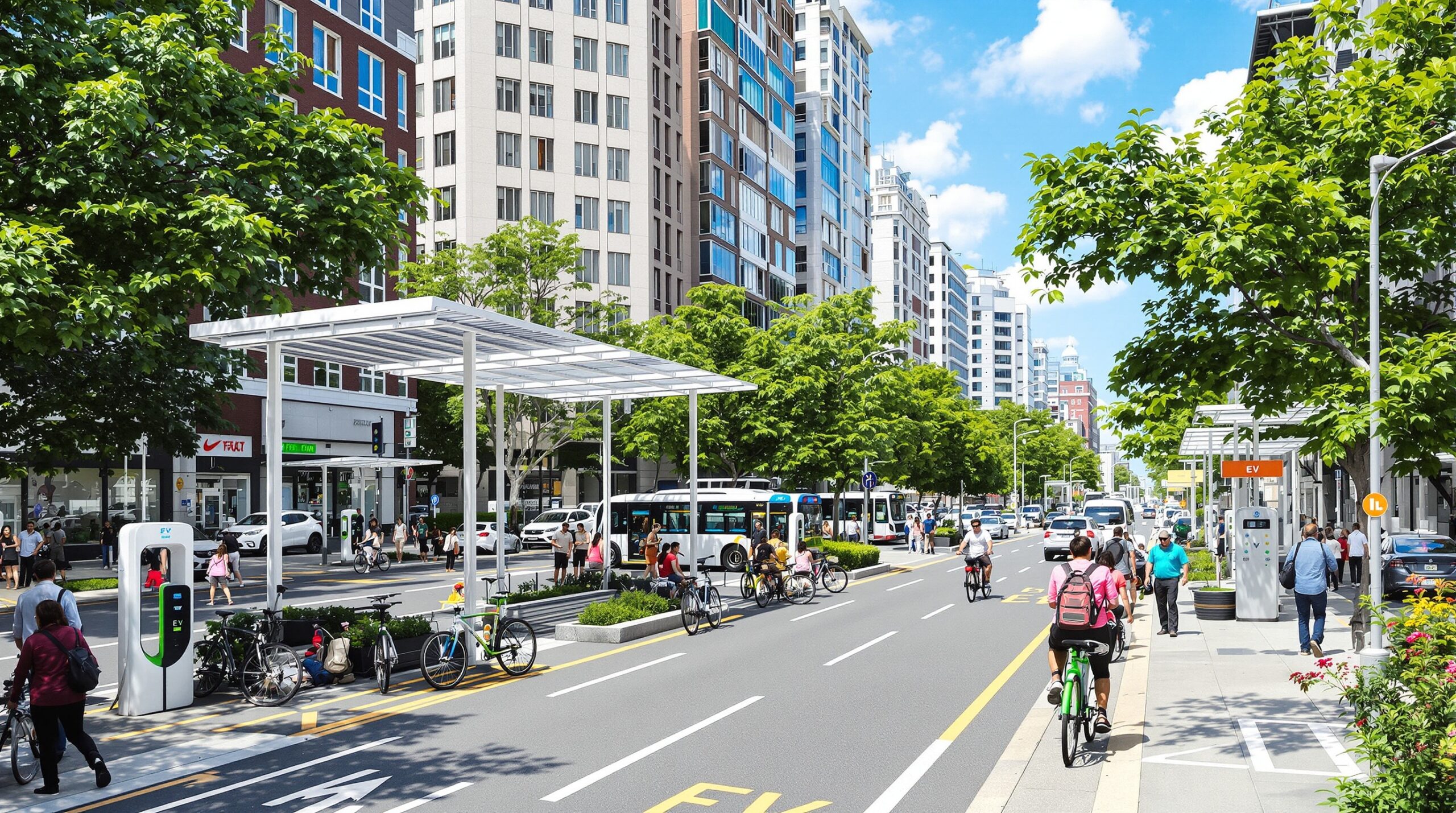Electric vehicles (EVs) are rapidly changing the nature of transportation in cities across the globe. These cleaner, quieter vehicles present exciting opportunities and complex challenges for urban infrastructure planning. Urban planners, policymakers, and engineers are reimagining how cities support new modes of mobility while reducing environmental impacts. This article explores how EV adoption shapes infrastructure decisions worldwide and what cities are doing to prepare for an electric future.
Expanding Charging Infrastructure for EVs
A reliable charging network is critical for widespread electric vehicle adoption. Urban centers are installing public charging stations at transit hubs, workplaces, shopping areas, and residential neighborhoods. Fast-charging stations appeal to commuters and taxi drivers who require a quick turnaround. Slow-charging options near offices and apartment complexes fit those who park for extended periods or overnight.
Cities like Oslo, Amsterdam, and Shanghai have prioritized comprehensive charging infrastructure rollouts. Private partnerships and government investment make it easier to find a charging point than ever before. As the number of EVs on city streets grows, planners must anticipate demand and strategically select installation locations. They must also account for grid capacity limits and future electric needs, ensuring seamless integration with existing urban landscapes.
Reinforcing and Upgrading Electrical Grids
Many urban areas face constraints in electricity transmission and distribution. The spike in EV charging demand can strain aging electrical grids. To cope, cities are upgrading substations, expanding energy storage, and incorporating smart-grid technology. These upgrades ensure a more reliable electricity supply and prevent outages during peak hours.
Smart grids offer another solution for balancing supply and demand. With real-time monitoring, power delivery can be optimized to match EV usage patterns. Time-of-use rates and software-controlled charging encourage off-peak charging, reducing strain on infrastructure. Urban planners must collaborate with utility companies to prioritize resilient and flexible grids as EV adoption grows.
Redesigning Streets and Public Spaces
Electric vehicles influence more than just energy needs. They shape how cities design roadways, parking, and public spaces. Dedicated EV parking and charging zones are popping up at shopping areas, airports, and city centers. These spaces often include clear signage, priority access, and reduced fees for electric vehicles.
Some cities create “green zones” where only zero-emission vehicles can enter, helping to improve local air quality. Urban planners are rethinking traditional gas stations, transforming them into multi-purpose hubs with EV chargers, rest areas, and retail spaces. These changes encourage EV adoption and promote healthier, more sustainable urban life.
Integrating Renewable Energy Sources
Cities worldwide are linking EV charging stations with renewable energy sources. Solar panels atop parking structures and buildings power on-site chargers, reducing carbon emissions and cutting electricity costs. Wind, hydro, and even waste-to-energy plants contribute clean electricity to urban charging networks.
Urban planners promote “green” charging points that prioritize renewable integration and energy efficiency. This approach supports city climate goals and appeals to environmentally conscious drivers. Integrating renewables into infrastructure planning is a key step in transitioning to cleaner, more resilient cities.
Supporting Equitable Access and Community Inclusion
Equitable EV access is a priority in modern infrastructure planning. Charging stations must serve all neighborhoods, including low-income areas and underserved communities. Policymakers offer incentives and subsidies to encourage EV ownership in disadvantaged sectors, making sustainable mobility more accessible.
Riders who lack private parking, such as apartment dwellers, often face hurdles in charging their vehicles. Cities are piloting on-street charging options to close this gap. Collaboration with local organizations and community input guides these initiatives, ensuring a fair and inclusive transition to electric transport.
Transforming Public Transit and Fleets
Many cities are transitioning public transit and municipal fleets to electric vehicles. Electric buses, taxis, and service vehicles reduce operating costs and lower urban pollution. Planners are building high-capacity charging depots at bus stations and maintenance yards to support these vehicles.
Fleet electrification often serves as a catalyst for broader infrastructure upgrades. The presence of reliable fleet charging infrastructure reassures private consumers, encouraging them to switch to electric themselves. Public and private fleets play a pivotal role in urban electrification and emission reduction strategies.
Managing Traffic and Urban Mobility
EVs are changing how engineers approach traffic patterns. Dynamic road pricing and congestion zones now take emissions into account, giving discounts to electric vehicles. Data from connected EVs informs traffic-light timing and route planning for greater efficiency.
Micromobility options, including electric scooters and bikes, are gaining momentum alongside EVs. Planners design shared charging facilities and encourage integrated mobility hubs. The push for sustainable urban transport includes a mix of electrified vehicles and active transportation options, creating a more flexible and resilient mobility network.
Addressing Policy, Regulation, and Investment
Transitioning to electric vehicles requires coordinated policy action. Cities implement building codes mandating EV-ready wiring for new developments to futureproof infrastructure. Grants, low-interest loans, and tax incentives drive private investment in charging networks.
International collaborations and knowledge-sharing platforms allow cities to learn from each other’s successes and setbacks. Regulatory clarity provides confidence for manufacturers and utility providers, ensuring smoother EV infrastructure deployment. Effective policy frameworks build momentum toward widespread and sustainable EV adoption.
Embracing a Cleaner, Smarter Urban Future
The growth of electric vehicles is fundamentally reshaping urban infrastructure worldwide. Planners, policymakers, and industry leaders work together to build resilient, inclusive, and forward-looking cities. Sustainable mobility solutions, powered by clean energy and innovative design, promise a future with cleaner air and quieter streets.
Each investment in EV-focused infrastructure not only supports today’s drivers but sets the stage for safer, smarter, and more connected cities. As technology evolves and adoption accelerates, urban infrastructure planning will remain at the heart of the electric mobility revolution.

